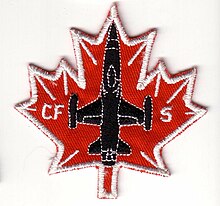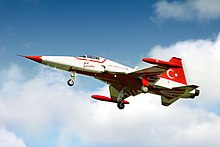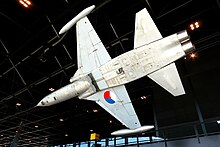
The Northrop F-5 is a family of supersonic light fighter aircraft initially designed as a privately funded project in the late 1950s by Northrop Corporation. There are two main models, the original F-5A and F-5B Freedom Fighter variants and the extensively updated F-5E and F-5F Tiger II variants. The design team wrapped a small, highly aerodynamic fighter around two compact and high-thrust General Electric J85 engines, focusing on performance and a low cost of maintenance. Smaller and simpler than contemporaries such as the McDonnell Douglas F-4 Phantom II, the F-5 cost less to procure and operate, making it a popular export aircraft. Though primarily designed for a day air superiority role, the aircraft is also a capable ground-attack platform. The F-5A entered service in the early 1960s. During the Cold War, over 800 were produced through 1972 for US allies. Though at the time the United States Air Force (USAF) did not have a need for a light fighter, it did procure approximately 1,200 Northrop T-38 Talon trainer aircraft, which was based on Northrop's N-156 fighter design.

The Canadair CT-114 Tutor is a jet trainer that was designed and produced by Canadian aircraft manufacturer Canadair. It served as the standard jet trainer of the Royal Canadian Air Force (RCAF), and later Canadian Armed Forces, between the early 1960s and 2000.

The Avro Canada CF-100 Canuck is a Canadian twinjet interceptor/fighter designed and produced by aircraft manufacturer Avro Canada. It has the distinction of being the only Canadian-designed fighter to enter mass production.

An aggressor squadron or adversary squadron is a squadron that is trained to act as an opposing force in military wargames. Aggressor squadrons use enemy tactics, techniques, and procedures to give a realistic simulation of air combat. Since it is impractical to use actual enemy aircraft and equipment, surrogate aircraft are used to emulate potential adversaries.

The McDonnell CF-101 Voodoo was an all-weather interceptor aircraft operated by the Royal Canadian Air Force and the Canadian Forces between 1961 and 1984. They were manufactured by the McDonnell Aircraft Corporation of St. Louis, Missouri for the United States Air Force, and later sold to Canada. CF-101s replaced the obsolete Avro CF-100 Canuck in the RCAF's all-weather fighter squadrons. The Voodoo's primary armament was nuclear AIR-2A Genie unguided air-to-air rockets, and there was significant political controversy in Canada about their adoption. Although they never fired a weapon in wartime, the CF-101 served as Canada's primary means of air defence from Quick Reaction Alert facilities at Canadian airbases. The CF-101s were retired in the 1980s and replaced with McDonnell Douglas CF-18 Hornet fighters. Many examples are preserved in museums and parks in Canada and the United States.

The Canadair Sabre is a jet fighter aircraft built by Canadair under licence from North American Aviation. A variant of the North American F-86 Sabre, it was produced until 1958 and used primarily by the Royal Canadian Air Force (RCAF) until replaced with the Canadair CF-104 in 1962. Several other air forces also operated the aircraft.

The Canadair CF-104 Starfighter is a modified version of the Lockheed F-104 Starfighter supersonic fighter aircraft built in Canada by Canadair under licence. It was primarily used as a ground attack aircraft, despite being designed as an interceptor. It served with the Royal Canadian Air Force (RCAF) and later the Canadian Armed Forces (CAF) until it was replaced by the McDonnell Douglas CF-18 Hornet.
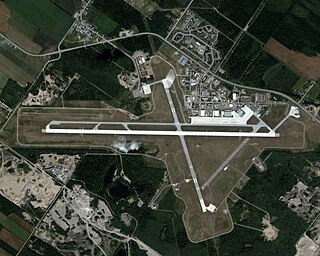
Canadian Forces Base Bagotville, commonly referred to as CFB Bagotville, and also known as Bagotville Airport or Saguenay-Bagotville Airport, is a Canadian Forces base located 4.5 nautical miles west of Bagotville in the city of Saguenay. Located in the centre of Quebec, less than 200 km (120 mi) north of Quebec City, CFB Bagotville is operated as an air force base by the Royal Canadian Air Force (RCAF) and is one of two bases in the country using the CF-18 Hornet fighter/interceptor, the other being CFB Cold Lake. Its primary RCAF lodger units are 2 Wing and 3 Wing.

The de Havilland Canada DHC-5 Buffalo is a short takeoff and landing (STOL) utility transport turboprop aircraft developed from the earlier piston-powered DHC-4 Caribou. The aircraft has extraordinary STOL performance and is able to take off in distances much shorter than even most light aircraft can manage.

The Boeing CC-137 is a retired transport and tanker aircraft which served with the Canadian Forces from 1970 to 1997. The Boeing 707-347C aircraft provided long range passenger transport for the military, VIP transport for government and air-to-air refueling for fighters such as the CF-116 Freedom Fighter and CF-18 Hornet. It was replaced by the Airbus CC-150 Polaris in the transport role and much later in the tanker role.

434 Operational Test and Evaluation Squadron is a Royal Canadian Air Force bomber squadron that flew bombing operations over Europe during World War II and was later a post-war fighter and combat support unit. It was disbanded in 2000. The squadron was reactivated in May 2018 as 434 Operational Test and Evaluation.
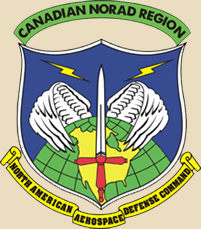
Canadian Forces Base Winnipeg is a Royal Canadian Air Force base located within the City of Winnipeg, Manitoba. Co-located at the Winnipeg James Armstrong Richardson International Airport, CFB Winnipeg is home to many flight operations support divisions, as well as several training schools. Its primary RCAF lodger unit is 17 Wing, commonly referred to as 17 Wing Winnipeg.

1 Canadian Air Division is the operational-level command and control formation of the Royal Canadian Air Force (RCAF). Prior to 2006 the official abbreviation for the division was 1 CAD. It is commanded by an air force major-general.

414 Electronic Warfare Support Squadron is a unit of the Royal Canadian Air Force. It is located in Ottawa and conducts electronic warfare support training for other units in the Canadian Armed Forces.

427 Special Operations Aviation Squadron is a tactical helicopter unit that provides aviation support to Canadian Special Operations Forces Command. The squadron is based at CFB Petawawa, Ontario with a fleet of Bell CH-146 Griffon helicopters. It was founded during the Second World War as No. 427 Squadron RCAF.

The National Air Force Museum of Canada is an aviation museum dedicated to preserving the history of the Royal Canadian Air Force (RCAF) and is located on the west side of CFB Trenton in Trenton, Ontario.

430 Tactical Helicopter Squadron is a unit of the Canadian Forces under the Royal Canadian Air Force. It operates Bell CH-146 Griffons from CFB Valcartier, near Quebec City in Quebec, Canada.
Air Defence Command was a command of the Royal Canadian Air Force and later the Canadian Armed Forces, active from 1951 to 1975.
The Lieutenant Vicente Landaeta Gil Air Base is a Venezuelan Air Force military airbase. It was established on February 14, 1964. It uses the runway and some of the other infrastructure of Jacinto Lara International Airport, located in Barquisimeto in the state of Lara, Venezuela. It is named after a Venezuelan military pilot who died in the first aircraft crash in Venezuela.


